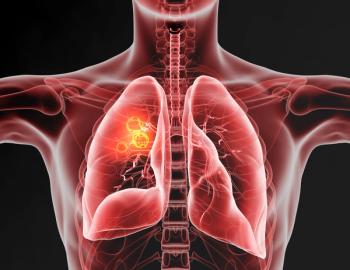
Pharmacy Practice in Focus: Health Systems
- July 2024
- Volume 13
- Issue 4
Covering Basic Skills of Pharmacy Practice During Residency Training Remains Important
Working closely with the rest of the pharmacy team to achieve these learning objectives is also an opportunity for the importance of humility in leadership development.
In this issue of Pharmacy Practice in Focus: Health Systems, Jaclyn M. Jaskowiak, PharmD, BCPS, BCSCP, authored “Implementing a Longitudinal Sterile Compounding Rotation for Pharmacy Residents.” I found this peer-reviewed paper a refreshing reminder of the importance of making sure that our postgraduate trainees in health-system pharmacy are receiving formalized training and evaluation in the basic skills necessary to provide safe and high-quality medication management for our patients. Although I fully support the need for our trainees to develop advanced direct patient care skills, develop project management and research capabilities, and become more sophisticated in their understanding of advanced therapeutics, we cannot forget the importance of the core services that are provided by the department of pharmacy. Many of our PGY-1 graduates will pursue the first independent practice job in an environment where these skills are necessary and expected. The most recently approved update from the American Society of Health-System Pharmacists (ASHP) Accreditation Standards for Postgraduate Year One Pharmacy Residency Programs is the ASHP Residency Accreditation Standard and Guidance Approved Revision 2024, which does not specifically address this type of training other than to state that meeting relevant United States Pharmacopoeia (USP) standards is an expectation of pharmacy services being provided by the institution. Although it is common for PGY-1 residents to have longitudinal staffing rotations/requirements, how many include a formal training and evaluation process for sterile compounding aligned with USP <797> and USP <800> standards? Too often, I suspect we are more aligned with the old “see one, do one, teach one” standard for staffing expectations.
One important element of the reported training program is the involvement of well-qualified pharmacy technicians in the training of residents. When I was an undergraduate pharmacy student in the early 1980s, my first experiential training in sterile compounding (before USP standards) was conducted by a senior pharmacy technician. I remember being impressed with how knowledgeable this individual was about the process, the proper use of the engineering controls to assure first air and an aseptic environment, and her high level of professionalism. It taught me early in my career to appreciate the value that our technician colleagues bring to the pharmacy team. In Patrick Lencioni’s book The Ideal Team Player, he identifies that the most important of the 3 virtues of the ideal leader is humility. The humble team player places team above self, recognizes the contributions of others, is not driven by ego, and defines success as the collective success of the team. Learning to be humble early in training is essential, and I believe the inclusion of qualified technicians to oversee the training of postgraduate pharmacy residents in a team-oriented environment such as the clean room is an excellent means of promoting humility among future leaders in the profession. Jaskowiak reported in her paper that feedback from the residents demonstrated recognition of the value of the technician-led training and that feedback led to program changes that will increase the resident’s exposure to the technician trainers.
Jaskowiak’s paper reminds us of the importance of assuring that training in the basics or core elements of pharmacy services is treated with the same rigor as other aspects of resident training and is not just a staffing rotation to help fill the schedule. Working closely with the rest of the pharmacy team to achieve these learning objectives is also an opportunity for trainees to experience firsthand the critical contribution of every member of the team and the importance of humility in leadership development.
Articles in this issue
over 1 year ago
Adjunct Lipid Therapies Offer Options for Lowering LDLover 1 year ago
Trends in Emergency Department Follow-Up Programsover 1 year ago
The Impact and Potential of Digital Health Technologiesover 1 year ago
Understanding the 505(b)(2) PathwayNewsletter
Stay informed on drug updates, treatment guidelines, and pharmacy practice trends—subscribe to Pharmacy Times for weekly clinical insights.

















































































































































































































